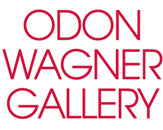Andre Dunoyer De Segonzac
French
Andre Albert Marie Dunoyer de Segonzac studied at the Ecole des Beaux-Arts in Paris in 1900 as a non-matriculated student. He was also a student in Luc-Olivier Merson’s private studio in 1903. After completing his military service, he failed the competitive entrance assessments for the Ecole des Beaux-Arts in 1905 and returned to Luc-Olivier Merson’s studio, from which he was sent down. He then entered the studio of Jean-Paul Laurens and later the Academie de La Palette where he was taught by Georges Desvallieres and Charles Guerin. From 1906, he worked alone.
In 1908, Segonzac began exhibiting in Paris at the Salon d’Automne and the Salon des Artistes Independants. In the same year he rented a house in the region of St.Tropez, and was inspired by it, spending his summers there for the rest of his life. He lived a nomadic existence, moving around in search of subject matter, particularly in the Ile-de-France and the Morin Valley. He held his first solo exhibition in Paris in 1914. He served in the infantry in the 1914-1918 war, before being moved to a camouflage division. The war interrupted his career, although be returned with some striking studies.
After the war, Dunoyer de Segonzac took part in many group exhibitions, including the main Paris salons. He showed his work at an increasing number of individual exhibitions, including in 1920 and 1927 in London, 1924 and 1928 in Paris, and 1934 in New York. He visited the USA in 1928 and traveled to Germany and Vienna in 1936. In 1933 he was awarded the Pittsburgh Carnegie Foundation Prize, and in 1934 he won the Venice Biennale Exhibition prize.
Segonzac created a rich and varied body of work. He used many different techniques, producing drawings, engravings, illustrations, watercolours and oil paintings, and many aesthetic approaches, expressing a range of artistic concepts through these varied forms. The thousands of drawings he produced throughout his career may be classed as preparatory sketches for engravings or watercolours. He was a skillful and prolific draughtsman, and his sketches were of interest for their technical skill and subject matter, such as his reportage sketches of the war.
From his earliest oils, dating from before 1910, he created formally, almost sculpturally structured compositions. He integrated and amalgamated the parts of the composition in his drawing, outlining them vigorously, and developed his own personal technique using thick layers of pigment, which he superimposed and built up with a knife. Before World War I, Segonzac used a sober and warm range of ochres, earth tones and browns in his oil paintings, emphasizing them with cold and somber greens and blues and strongly contrasting highlights and shadows.
Segonzac produced several theatre sets and illustrated many literary works, publishing a number of his own works including Drawings of Nudes, Dances of Isadora Duncan, Eight War Illustrations, a series of etchings on Versailles among others.
In 1947 he was made a member of the Royal Academy in London and in 1948 he became an associate member of the Academie Royale of Belgium.
Source: Benezit, Dictionary of Artists




